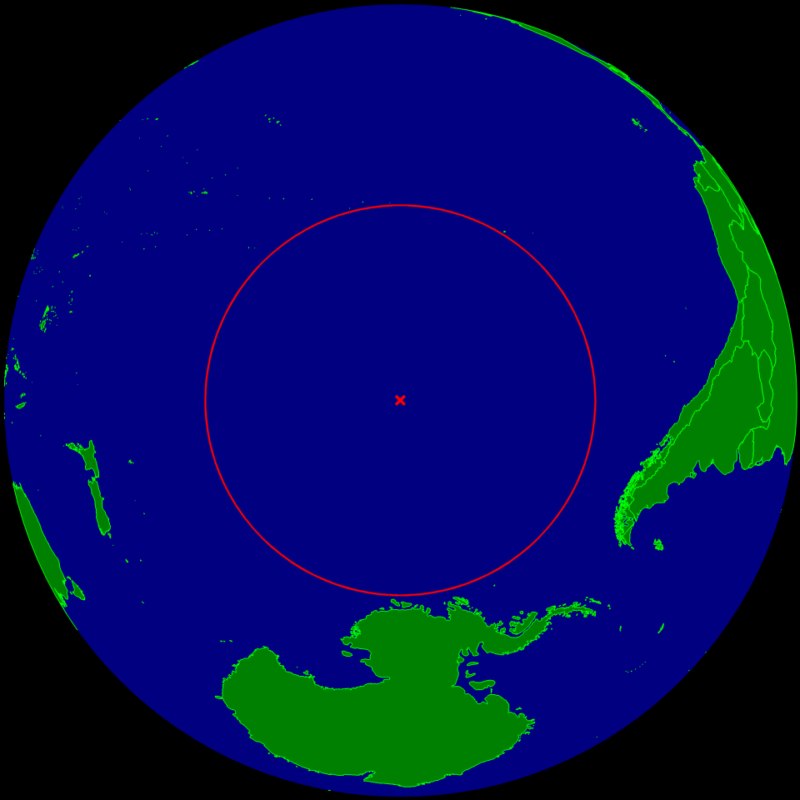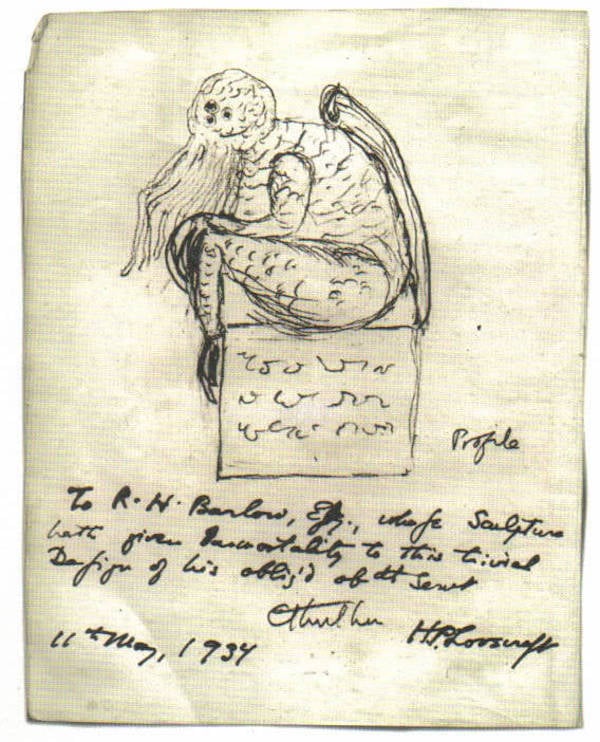At more than 1,000 miles from civilization in all directions, Point Nemo is unlike any other place in the world.

Wikimedia CommonsThe locaiton of Point Nemo, the pole of inaccessibility known as the most remote location on planet Earth.
People often vaguely refer to “the middle of nowhere,” but as it turns out, scientists have actually figured out precisely where that point is. Point Nemo, the most remote location on Earth, is so far removed from civilization that the closest humans to that location at any given time are likely to be astronauts.
In fact, that is precisely why NASA and other global space agencies have designated Point Nemo in the Pacific Ocean as their underwater space graveyard for falling debris. And in 2031, when the International Space Station comes crashing down, it will do so here — as far away from any humans as geographically possible.
Where Is Point Nemo?
Point Nemo is officially known as “the oceanic pole of inaccessibility,” or the point in the ocean farthest from land. Located at 48°52.6’S 123°23.6’W, the spot is quite literally the middle of nowhere, surrounded by more than 1,000 miles of ocean in every direction.
The closest landmasses to the pole are one of the Pitcairn Islands to the north, one of the Easter Islands to the northeast, and one island off the coast of Antarctica to the south.
There are no human inhabitants anywhere near Point Nemo. And scientists chose to call the location “Nemo” because it is Latin for “no one” and as a reference to Jules Verne’s submarine captain from 20,000 Leagues Under The Sea.
The location is so isolated that the closest people to Nemo are not even on Earth. According to the BBC, astronauts aboard the International Space Station are around 258 miles from the Earth’s surface at any given time. Since the inhabited area closest to Point Nemo is more than 1,000 miles away, the humans in space are far closer to the pole of inaccessibility than those on land.
The Most Remote Place On Earth
Not even the man who first calculated the precise location of Point Nemo has ever visited it. In 1992, Croatian survey engineer Hrvoje Lukatela set out to find the exact point in the Pacific that was farthest away from any land using a computer program.

FlickrMotu Nui of the Easter Islands is the closest landmass to Point Nemo, though it is still more than 1,000 miles to the north.
According to Live Science, the program calculated the coordinates that were the greatest distance from three equidistant land coordinates. It is very possible that no human has ever passed through Point Nemo’s exact coordinates. This sort of isolation is precisely what makes Point Nemo a major trigger for the fear of open water known as thalassophobia.
As for non-human inhabitants, there aren’t very many of those around Point Nemo either. Point Nemo’s coordinates fall within the South Pacific Gyre, an enormous rotating current that prevents nutrient-rich water from flowing into the area. Without any food sources, sustaining most life in this part of the ocean is impossible.
Although that’s not to say that nothing survives in the region. Scientists have documented several bacteria and small crabs that live near the volcanic vents on the seafloor at Point Nemo.
Mysteries Associated With Point Nemo
Because Point Nemo is located in what has been described as “the least biologically active region of the world ocean,” according to Vice, scientists were surprised when, in 1997, they detected one of the loudest underwater sounds ever recorded near the oceanic pole of inaccessibility.
The sound was captured by underwater microphones more than 3,000 miles apart. Befuddled scientists at America’s National Oceanic and Atmospheric Administration (NOAA) was at a loss to think of something large enough to create such a loud sound underwater and dubbed the mystery noise “The Bloop.” Sci-fi enthusiasts, however, quickly thought of one explanation.
When writer H.P. Lovecraft first introduced readers to his infamous titular, tentacled monster in 1926’s “The Call of Cthulhu,” he wrote that the creature’s lair was the lost city of R’yleh in the south Pacific Ocean. Lovecraft gave R’yleh the coordinates 47°9’S 126°43’W, which are astonishingly close to Point Nemo’s coordinates and where The Bloop occurred.
And because Lovecraft first wrote about his sea monster in 1928, 66 years before Lukatela calculated Nemo’s location, some people have speculated that the pole of inaccessibility was, in fact, home to a yet-undiscovered creature of some sort.

Wikimedia CommonsH.P. Lovecraft placed the home of his legendary monster Cthulhu eerily close to the coordinates of Point Nemo, decades before they were even calculated
As it later turned out, however, The Bloop was the sound of ice breaking off Antarctica, not the Call of Cthulhu.
Point Nemo’s Role As A Spaceship Graveyard
Point Nemo does, however, have at least one other eerie claim to its name. Due to its remoteness and distance from shipping routes, the area around Nemo was chosen as a “spaceship graveyard.”
Because autonomous spaceships, satellites, and other space junk are not designed to functionally survive re-entry into Earth’s atmosphere (the heat usually destroys them), scientists needed to select an area where there would be an extremely low risk of any humans being struck with flying space-debris.
With zero population, the oceanic pole of inaccessibility at Point Nemo offered the perfect solution. According to CNN, NASA first started using the region in 1971. Since then, more than 263 pieces of junk have crashed into the area, including some of the world’s greatest spacecraft, including the Russian Mir space station and NASA’s first space station, Skylab.
Although a Lovecraftian monster may not lurk in its depths, Point Nemo is surrounded by remains of spacecraft that are, indeed, not of this world.
After this look at Point Nemo, discover the most unbelievable facts about planet Earth. Then, check out the most remote places in all of human civilization.





